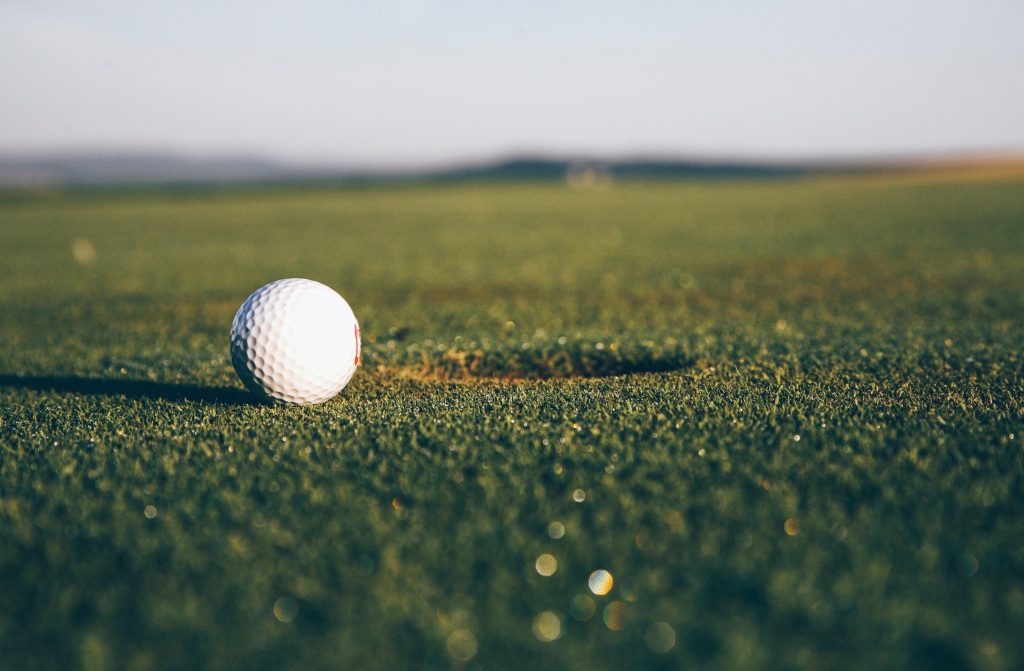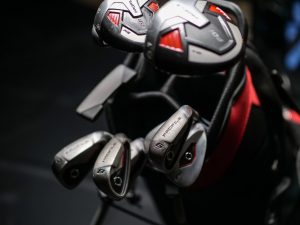How are Golf Balls made? Golf balls are made of various materials, and the process by which they’re created is variable. The making of golf balls has changed over time.
The rules of the United States Golf Association (USGA) and the R & A of St. Andrews, Scotland (R&A) must be followed for official golf balls. These standards are now in sync, although they weren’t always so. Between 1931 and 1988, the R&A allowed a smaller ball size than that permitted by the USGA, meaning players used a different-size ball during European competitions.

The Standard Golf Ball
Golf is when players hit a spherical object through a pre-determined route into a hole. The game’s birthplace is attributed to Scotland. It’s difficult to pin down the precise date when golf was invented, but the Scottish Parliament banned it in 1457, indicating that it was popular by then. In France, Belgium, and Holland, hockey-like games were played using a club or paddle and a ball, stone, or disk dating back to at least 1500 years ago. A stick was used to hit the ball toward a goal. The game of golf was originally played with hardwood balls that were carved in the 1400s, and it was enjoyed by members of all social classes – from peasants to royalty – at that time.
Golf Balls Made Of Leather
In 1618, one of the first golf ball improvements was developed.
The “featherie” was a leather bag made of three pieces of leather stitched together and then filled with wet feathers, usually goose. They expanded and gave the sack a round form when the feathers dried. The balls were then painted. The balls didn’t endure long because the leather was more delicate than wood. The featheries’ superior flight capability was its main selling point. Because the featheries were pricey and fragile, golf became a game for the wealthy as soon as they were invented.

The Beginnings Of Rubber Golf Balls
The game didn’t return to the general public until more than two centuries later, in the mid-nineteenth century, when gutta percha balls were manufactured from the still-undiscovered substance called rubber. “Gutties” were named after them because they resembled potatoes. When it was discovered that perfectly smooth balls didn’t go as far when hit as those with tiny indentations, golfballs were hammered manually. The dimples on modern golf balls are a result of these indentations. Natural and artificial rubbers are still used in today’s golf ball.
Golf Balls For Modern Play
A modern two-piece ball is made by surrounding a spherical molded core composed of rubber or synthetic rubber with a hard shell. The core is then placed in an injection mold. Hot plastic, either surlyn or urethane, is injected and the core becomes encased in a rough, dimpled covering. The ball is sprayed with paint, inscribed with a logo, and given a glossy finish before being dried.
The Evolutionary Process
The rules and regulations governing the manufacture of a golf ball are set by the USGA and the R&A at St. Andrews, Scotland, where golf is governed. The ball must not weigh more than 1.62 ounces or be smaller than 1.68 inches in diameter.
There are no limitations on the size or weight of the ball.
The USGA and the R&A set minimum and maximum initial velocities for golf balls, as well as how far they may fly before touching the ground. Golf balls are made of two, three, or four pieces.
Core Element
The core of a two-piece ball is formed to the manufacturer’s requirements through molding.
Outer Casing
A two-piece ball’s outer casing is formed through an injection molding procedure after the core has been molded.
Surlyn is used for the external covering of two-piece golf balls. Surlyn is more scratch-resistant and harder than three- and four-piece ball urethane covers.
Dimples
The dimple patterns on a golf ball are designed to reduce turbulence and drag created by the spinning ball, making the ball fly straighter and farther.
There are between 330 and 370 dimples on a modern golf ball.
The cover is molded around the core and inner mantle while still in the mold. The cover is then cured, trimmed, and finished.
Inner Mantle
A two-piece ball’s inner mantle (or layer) is made from rubber or synthetic rubber compound. It is designed to hold the core together during impact.
Manufacturing Process For Three-Piece Balls
A three-piece ball has an outer casing, a central core molded into place, and an inner mantle made of solid material. The center core may be composed of different materials, such as rubber, which will influence how the ball performs: rubber – provides durability and spin; urethane – improves feel and reduces spin; polybutadiene – gives a softer feel and greater distance; ionomer – creates a harder surface for longer drives. After being placed in the mold, the cover is molded around the core and inner mantle.
Painting, Varnishing, And Sanding
The seams of an inner covering are smoothed after the ball has been covered with an outer casing. The ball is then spray painted, and logos stamped. There are no restrictions on the color of the ball. The USGA’s 2012 Golf Ball Conformance Submission Requirements forbid the use of iridescent paint. After a clear coat is applied, the ball is dried and packaged. Two-piece balls are checked for size and roundness conformity before being wrapped in cellophane.
Balls With Three And Four Parts
The three- and four-piece balls are made differently than two-piece balls. There are more than 80 stages and 32 inspections involved in producing these balls.
A three-piece ball has a third protective layer of enhanced rubber over the inner core. The inner core may be covered with either solid or roped rubber string. The core coverage’s function is to send the force of the club striking the ball to the inner core.
A four-piece ball has a portion of the outer casing between the soft center and hard outer casing separated by a middle casing. Surlyn is generally used to create the exterior casing, which is softer than surlyn. The third and fourth casings are compressed into the core and joined with heat and molding utilizing the two outer casing halves.
Articles You Might Want to Read:






